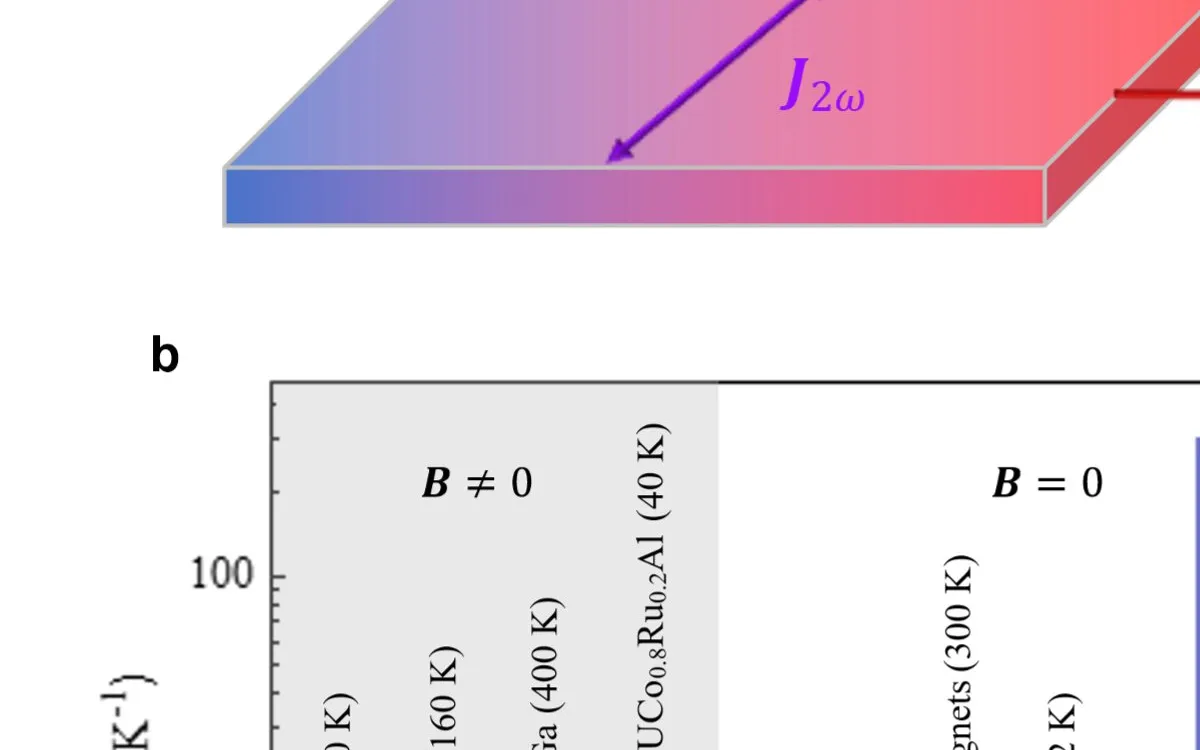
The generation of electricity from heat, commonly referred to as thermoelectric energy conversion, has emerged as a promising technology for a variety of real-world applications. This innovative method is particularly beneficial for generating energy in challenging environments, such as during space expeditions and military missions. Moreover, it plays a crucial role in the recovery of waste heat generated by industrial plants, power stations, and vehicles.
The successful transformation of heat into electricity depends on two primary effects: the Seebeck effect and the Nernst effect. The Seebeck effect occurs when two dissimilar materials are joined at two junctions that are maintained at different temperatures, leading to the generation of an electric current in a closed loop. Conversely, the Nernst effect involves the generation of a transverse voltage in a material that exhibits a temperature gradient.
Historically, the Nernst effect has been demonstrated primarily in systems that break time-reversal symmetry, often through the application of an external magnetic field or by utilizing magnetic materials. However, recent theoretical advancements have suggested the existence of a nonlinear Nernst effect (NNE) that could manifest in non-magnetic materials, notably without the need for an external magnetic field.
Researchers from Fudan University and Peking University have made significant strides in realizing this concept experimentally for the first time. Their groundbreaking study, published in Nature Nanotechnology, documents the observation of a substantial nonlinear Nernst effect in a specialized form of trilayer graphene known as ABA trilayer graphene. According to Pan He, co-senior author of the paper, the research was inspired by the unique challenges and opportunities within the realm of thermoelectricity.
The conventional Nernst effect typically necessitates breaking time-reversal symmetry, which complicates the miniaturization and integration of thermoelectric devices. However, the recent theoretical predictions regarding the NNE have opened new avenues for research. The NNE is theorized to occur in non-magnetic materials without requiring an external magnetic field, potentially revolutionizing the development of devices that convert heat into electrical power.
He and his team aimed to be the first to experimentally observe the NNE. They began by fabricating high-quality Hall bar devices equipped with microfabricated heaters and thermometers, allowing for precise control and measurement of local temperature gradients across the sample. Utilizing low-frequency electric harmonic measurements under alternating thermal gradients, the researchers successfully detected the nonlinear Nernst effect.
By applying a sinusoidal current to a heater, they induced a temperature gradient in the material that oscillated at double its regular frequency. This led to the observation of a fourth harmonic transverse voltage, signifying a second-order response to the temperature gradient they generated, contrasting sharply with the linear response characteristic of the conventional Nernst effect.
This research presents the inaugural experimental observation of a substantial NNE in a non-magnetic material under zero magnetic field conditions. The team measured an impressive effective Nernst coefficient of up to 300 µVK-1 at 2 K in ABA trilayer graphene, which is approximately two orders of magnitude larger than the highest values recorded in magnetic materials at zero magnetic field.
The implications of this discovery are vast. Most notably, it provides an alternative pathway for harvesting thermoelectric energy without relying on magnetic materials or external magnetic fields. The experimental methods developed by the team could pave the way for more compact thermoelectric devices suitable for deployment in diverse real-world scenarios.
He expressed excitement about the future research possibilities stemming from this work. A primary goal is to extend the NNE observations from low temperatures (below 12 K) to room temperature, a crucial step for wider practical applications. The team plans to investigate other time-reversal invariant and non-centrosymmetric materials that may exhibit this effect at elevated temperatures and through various mechanisms.
Furthermore, they intend to optimize the NNE they have observed and explore its modulation using external magnetic fields. Ultimately, the aim is to realize the NNE in three-dimensional bulk materials to overcome the limitations associated with 2D systems.
This research could significantly advance the field of thermoelectric energy conversion, offering new solutions for efficient energy generation and utilization in various applications.